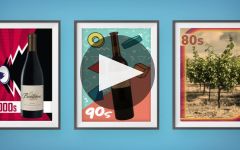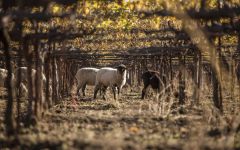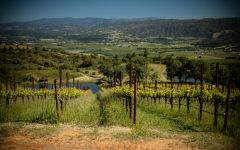Bonterra Organic Rose 2009


Product Details
Your Rating
Somm Note
Winemaker Notes
Other Vintages
2022-
Tasting
Panel
-
Tasting
Panel -
Wilfred
Wong
-
Tasting
Panel
-
Wilfred
Wong
-
Wilfred
Wong







Organically farmed and masterfully crafted, Bonterra Organic Vineyards epitomizes wines that are perfectly in tune with nature. A celebration of farm-fresh flavors, the portfolio features wines coaxed from the earth by careful farming practices carried out on a dynamic network of estate and partner farms throughout California. In addition to a widely available collection of organically farmed wines that includes Chardonnay, Sauvignon Blanc, Cabernet Sauvignon, Merlot, Equinox Red and Rosé, Bonterra crafts a trio of sought-after single-vineyard offerings from estate Biodynamic® vineyards in Mendocino County, and The Elysian Collection Merlot, an elevated offering from organic grapes.
Long before organic produce filled the shelves of neighborhood groceries, the dedicated team at Bonterra was committed to organic and Biodynamic® farming because they passionately believe that farms teeming with biodiversity—encompassing vines, insects and wildlife, and healthy soils—yield organic grapes leading to better wines. Whether supporting the health of honeybees with hive housing in its organic vineyards, trading tractors for sheep to maintain vineyards during the winter months, or giving back to the future of agriculture through educational outreach and shared knowledge, Bonterra strives to leave behind a legacy of thoughtful winegrowing inspired by the potential of nature itself.

Whether it’s playful and fun or savory and serious, most rosé today is not your grandmother’s White Zinfandel, though that category remains strong. Pink wine has recently become quite trendy, and this time around it’s commonly quite dry. Since the pigment in red wines comes from keeping fermenting juice in contact with the grape skins for an extended period, it follows that a pink wine can be made using just a brief period of skin contact—usually just a couple of days. The resulting color depends on grape variety and winemaking style, ranging from pale salmon to deep magenta.

Reaching up California's coastline and into its valleys north of San Francisco, the North Coast AVA includes six counties: Marin, Solano, Napa, Sonoma, Mendocino and Lake. While Napa and Sonoma enjoy most of the glory, the rest produce no shortage of quality wines in an intriguing and diverse range of styles.
Climbing up the state's rugged coastline, the chilly Marin County, just above the City and most of Sonoma County, as well as Mendocino County on the far north end of the North Coast successfully grow cool-climate varieties like Pinot Noir, Chardonnay and in some spots, Riesling. Inland Lake County, on the other hand, is considerably warmer, and Cabernet Sauvignon, Zinfandel and Sauvignon Blanc produce some impressive wines with affordable price tags.
